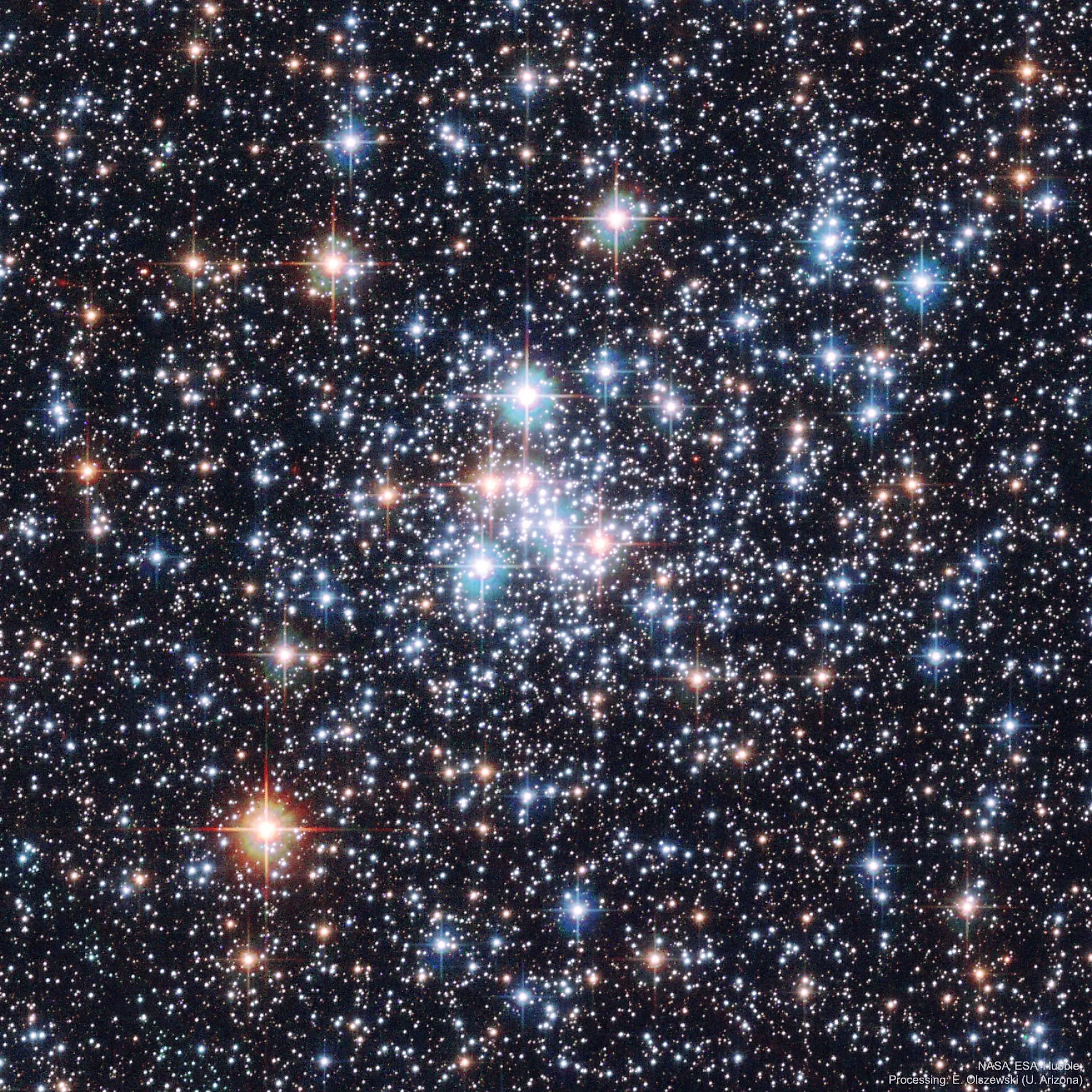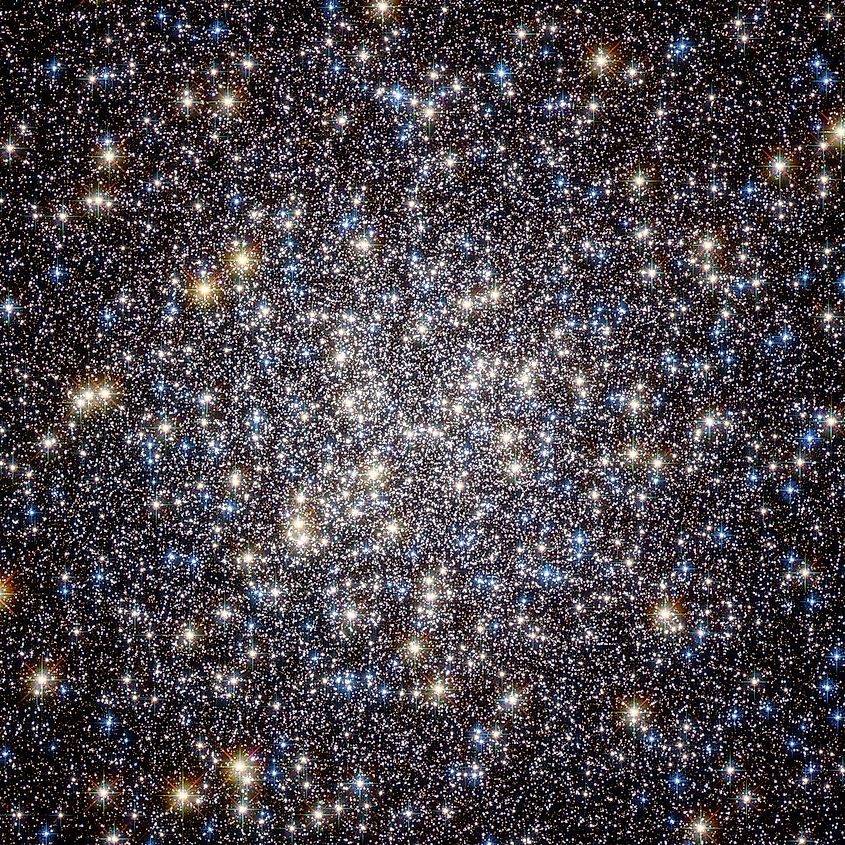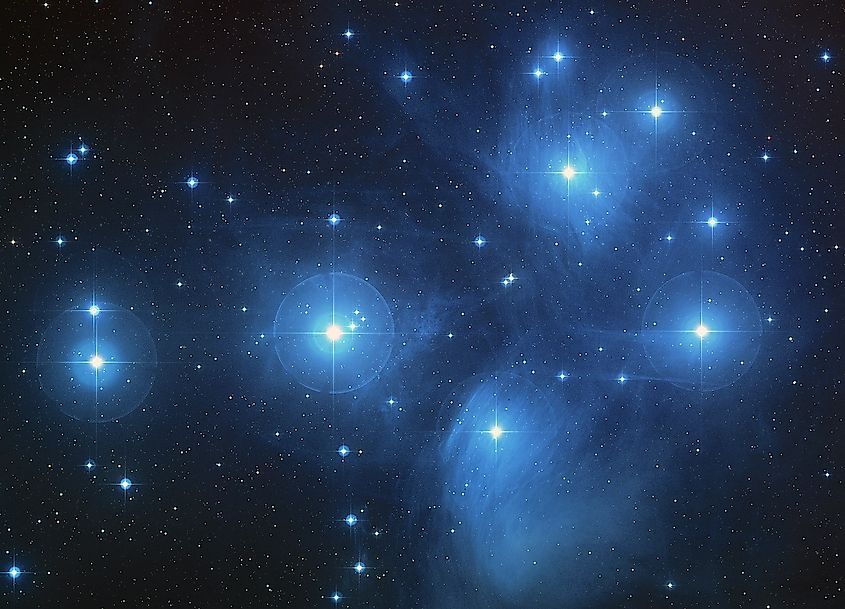
The Different Types Of Star Clusters
Our solar system contains only one star, the sun. Interestingly, our sun is actually unique in that there are no other stars around it. Most of the stars in the Milky Way exist in systems of two or more stars. Stars can congregate together in vast numbers, forming what is known as a star cluster. Star clusters come in two types: globular clusters and open clusters. What are these types of clusters and what makes them different?
Globular Clusters

Globular star clusters generally contain millions of individual stars, the majority of which are low mass, red stars. Lower mass stars burn through their fuel at a much slower rate than high mass stars, and so they exist for far longer periods of time. Since globular clusters mostly contain low mass stars, they tend to be many billions of years old. Stars within globular clusters are packed together in a relatively small region of space. Most stars in a globular cluster are only light hours to light days apart. The small distance between individual stars also means that the gravitational pull between them is stronger. Globular clusters can remain intact for many billions of years due to the fact that the gravitational pull of the stars maintains the entire structure.
One of the largest globular clusters in the Milky Way is Messier 13, a vast globular cluster located in the constellation Hercules. Messier 13 is 145 light years in diameter and 22,180 light years away from our solar system. The stars within Messier 13 are so close to one another that they occasionally collide, producing a small number of high mass, blue stars. Messier 13 is one of the easiest star clusters to see with a small telescope.
Open Clusters

Open star clusters are the opposite of globular clusters. Rather than containing a vast number of low mass stars, open clusters contain a small number of high mass stars. While a globular cluster may contain millions of stars, an open will cluster will have hundreds to thousands. Open star clusters are also relatively young since the stars within them tend to go supernova in only a few million years. Most open star clusters are less than a billion years old, making them far younger than globular star clusters. Unlike globular star clusters, the stars within open clusters are much further apart. Because of this, the gravitational pull between stars in open clusters is weaker, and the stars will generally drift apart over the course of hundreds of millions of years.
One of the closest open star clusters to our solar system, and the only star cluster visible to the naked eye, is the Pleiades. The Pleiades are one of the most well known objects in the night sky, and they have been observed by different civilizations for thousands of years. In fact, the ancient Greeks and Romans often used the Pleiades for eye tests, with the number of stars you could see used to determine how good your eyesight was. The Pleiades are located 444 light years from our solar system in the constellation Taurus. As an open star cluster, the Pleiades contains a number of high mass, blue stars. Based on how old the stars appear, the Pleiades is believed to have formed around 100 million years ago. Astronomers estimate that, given how fast the stars are moving away from each other, the Pleiades will likely disappear in the next 250 million years.











